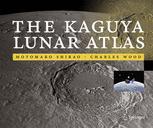

Most ebook files are in PDF format, so you can easily read them using various software such as Foxit Reader or directly on the Google Chrome browser.
Some ebook files are released by publishers in other formats such as .awz, .mobi, .epub, .fb2, etc. You may need to install specific software to read these formats on mobile/PC, such as Calibre.
Please read the tutorial at this link: https://ebookbell.com/faq
We offer FREE conversion to the popular formats you request; however, this may take some time. Therefore, right after payment, please email us, and we will try to provide the service as quickly as possible.
For some exceptional file formats or broken links (if any), please refrain from opening any disputes. Instead, email us first, and we will try to assist within a maximum of 6 hours.
EbookBell Team

5.0
18 reviewsIn late 2007 the Japan Aerospace Exploration Agency placed the Kaguya/Selene spacecraft in orbit around the Moon. Like previous lunar orbiters, Kaguya carried scientific instruments to probe the Moon’s surface and interior. But it also had the first high-definition television camera (HDTV) sent to the Moon. Sponsored by the Japanese NHK TV network, the HDTV has amazed both scientists and the public with its magnificent views of the lunar surface. What makes the images much more engaging than standard vertical-view lunar photographs is that they were taken looking obliquely along the flight path. Thus, they show the Moon as it would be seen by an astronaut looking through a porthole window while orbiting only 100 km above the lunar surface. This is the view we all would wish to have, but are never likely to, except vicariously through the awe-inspiring Kaguya HDTV images. The remarkable Kaguya/Selene HDTV images are used here to create a new type of lunar atlas. Because of the unique perspective of the images each plate shows the surface in a manner that makes it visually appealing and scientifically understandable. Motomaro Shirao was a member of the Kaguya HDTV team and selected the targets for imaging. Charles Wood, an expert on lunar science and history, describes the pictures with text as informative as the images are beautiful.